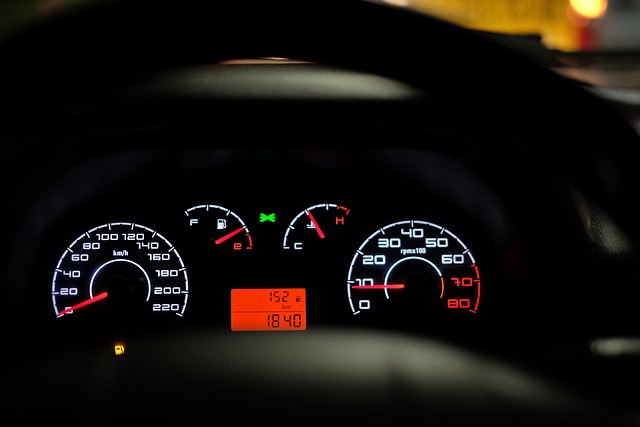Looking to register your car in California? This comprehensive guide breaks down the process step-by-step, from eligibility requirements to common issues. First, understand the essential criteria for registration, including residency and vehicle condition. Next, gather vital documents for the DMV VIN verification process, ensuring accuracy and convenience. We then detail the straightforward registration procedure at your local DMV. Learn about fees, payment options, and potential hurdles, offering practical tips for a smooth experience.
- Eligibility Requirements for Car Registration in California
- Gathering Necessary Documents for DMV Vin Verification
- The Step-by-Step Process of Registering a Car at the DMV
- Understanding Fees and Payment Methods for Car Registration
- Common Issues and How to Resolve Them During Registration
Eligibility Requirements for Car Registration in California

To register your car in California, you must first meet certain eligibility requirements set by the Department of Motor Vehicles (DMV). One crucial aspect is ensuring that your vehicle is safe and roadworthy. This involves a thorough inspection that includes checking the car’s emissions and safety features. The DMV recommends using a mobile VIN inspector or verifier to validate the vehicle’s history, including its mileage and any previous accidents or damage, making the registration process more efficient.
Additionally, you’ll need proof of insurance, a valid driver’s license, and the appropriate fees. If your car is new, you might require a certificate of origin from the dealer. For used vehicles, a completed DMV Form 46 (Application for Title and Registration) is necessary. It’s important to note that certain types of vehicles may have extra requirements, such as emissions testing or specific registration fees, so checking with the DMV or using their online resources can help streamline the registration process, especially when considering options like mobile VIN verification.
Gathering Necessary Documents for DMV Vin Verification

Before heading to the DMV for car registration, ensure you gather all the essential documents required for a successful VIN (Vehicle Identification Number) verification process. This includes your vehicle’s registration certificate from the previous state, if applicable, or proof of ownership through a purchase agreement or bill of sale. Don’t forget to bring along the title document as well.
Additionally, it is crucial to have identification documents such as a valid driver’s license or passport for both you and any additional owners listed on the vehicle registration. If you’re opting for a convenient mobile VIN verification service, make sure to download their app in advance. These services can provide quick and efficient vin inspection options, saving you time while ensuring your car meets all necessary standards for California registration.
The Step-by-Step Process of Registering a Car at the DMV

Registering a car in California involves a straightforward process that can be completed at your local Department of Motor Vehicles (DMV) office or, for added convenience, through a mobile vin inspection service. Here’s how to do it step-by-step:
1. Gather Required Documents: Before visiting the DMV, ensure you have all necessary documents. These typically include proof of ownership (like a bill of sale), your vehicle’s title, valid identification (such as a driver’s license), and proof of insurance. If using a mobile vin verifier, some services may allow you to upload digital copies of these documents for pre-verification.
2. Perform a VIN Verification: The California DMV requires a Vehicle Identification Number (VIN) verification. You can do this by visiting the official DMV website to check if the vehicle’s information matches its title and registration history. Alternatively, consider using a mobile vin inspection or mobile vin verifier service to complete this step remotely. This ensures your registration process is as smooth and efficient as possible.
Understanding Fees and Payment Methods for Car Registration

When registering your car in California, understanding the fees involved is crucial. The process typically includes a registration fee, vehicle emissions inspection, and a DMV (Department of Motor Vehicles) vin verifier service charge. It’s important to note that fees may vary slightly depending on your vehicle type and emissions standards. For instance, electric vehicles might have different emission requirements than conventional gasoline or diesel cars.
Payment methods for car registration in California include cash, credit cards, and debit cards. Some counties may also accept checks, but it’s advisable to check with your local DMV as policies can differ. For a seamless process, many residents opt for mobile vin verification or inspection services, which allow them to complete the registration from the comfort of their homes. These services utilize the vehicle identification number (VIN) to access necessary data and ensure your car meets all legal requirements before registration.
Common Issues and How to Resolve Them During Registration

When registering your car in California, one common issue that arises is misplacing or not having accurate vehicle documents. To resolve this, ensure all necessary paperwork is readily available. This includes registration forms, proof of insurance, and a valid driver’s license. If you’re using a mobile vin verifier or engaging in a vin inspection, double-check the vehicle identification number (VIN) accuracy to avoid delays.
Another challenge could be a discrepancy in the VIN recorded by the DMV and that on your car’s documents, especially if there have been previous owners or modifications. Address this by gathering all historical documentation related to the vehicle, including purchase records and repair receipts. If needed, utilize a reliable mobile vin verification service to cross-reference and verify the VIN information for accuracy with the California DMV standards.
Registering a car in California is a straightforward process, as long as you meet the eligibility requirements and have all the necessary documents. By following the step-by-step guide provided, gathering the required paperwork, and understanding the associated fees, you can ensure a smooth registration experience. Remember to bring your vehicle for a DMV VIN verification, as this is a crucial part of the process. Should you encounter any issues, the article has equipped you with solutions to common problems, ensuring a successful car registration in California.
